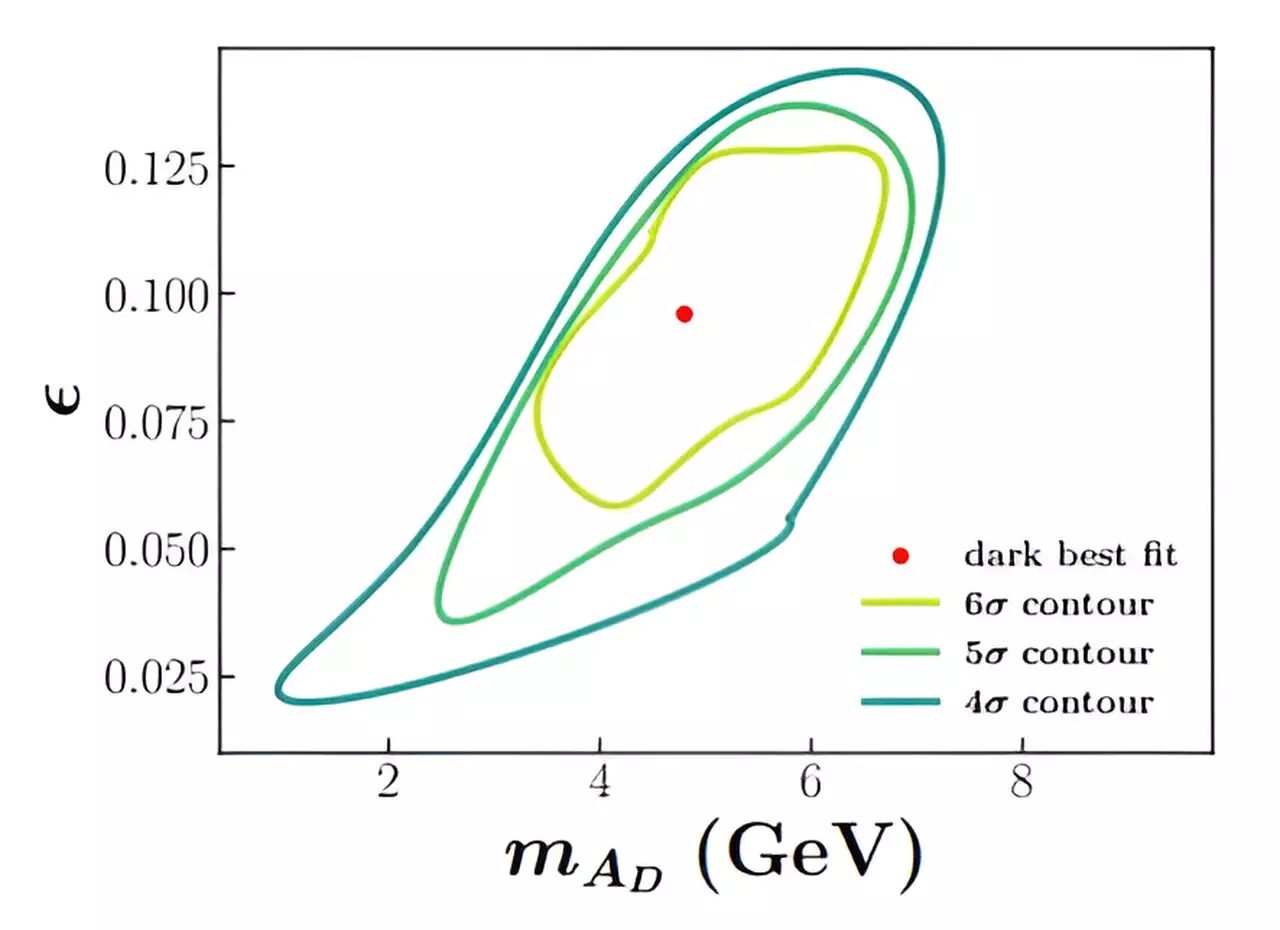The fascinating mystery of dark matter continues to captivate the minds of scientists worldwide. Despite being responsible for 84% of the universe’s matter, our understanding of dark matter remains limited. Led by Professor Anthony Thomas from the University of Adelaide, a team of international researchers is pushing the boundaries of knowledge in their pursuit of unraveling the enigma of dark matter. In their latest study, they focus on the potential role of the dark photon, a theoretical particle that may bridge the gap between dark matter and regular matter.
Regular matter, which constitutes our physical world, pales in comparison to the abundance of dark matter. With a ratio of five to one, dark matter dwarfs regular matter in terms of sheer quantity. However, its precise nature eludes us, despite extensive efforts by physicists. The only evidence we have for the existence of dark matter arises from its gravitational interactions. To gain deeper insights into this mysterious substance, researchers like Professor Thomas are investigating the dark photon as a potential key.
The dark photon, a hypothetical particle residing in the hidden sector, presents a fascinating opportunity to bridge the worlds of dark matter and regular matter. Similar to how photons mediate electromagnetic forces in our world, the dark photon could serve as a force carrier for interactions between dark matter particles. This intriguing proposition drives the curiosity of physicists worldwide, as they hope to leverage the existence of the dark photon to deepen our understanding of dark matter.
In their pursuit of knowledge, Professor Thomas and his colleagues from the Australian Research Council (ARC) Center of Excellence for Dark Matter Particle Physics employ a range of experimental approaches. By analyzing existing theories and experimental results, they aim to discern the influence of the elusive dark photon. Their most recent study focuses on the potential effects of the dark photon on the outcomes of deep inelastic scattering processes.
Unveiling Mysteries through Deep Inelastic Scattering
Deep inelastic scattering, a process used in particle physics, allows scientists to delve into the depths of hadrons, such as protons and neutrons. By accelerating particles to extreme energies and studying the by-products of their collisions, researchers gain valuable insights into the subatomic world and the underlying laws of nature. The team from the University of Adelaide, in collaboration with their colleagues at the Jefferson Laboratory in Virginia, USA, utilizes this technique to investigate the possible presence of the dark photon.
To conduct their extensive analysis, the researchers employ the state-of-the-art Jefferson Lab Angular Momentum (JAM) parton distribution function global analysis framework. Through modifications to this framework, they account for the potential existence of a dark photon. With this approach, they can examine the experimental results of deep inelastic scattering processes comprehensively. By exploring the effects of the dark photon, the team hopes to uncover further clues about the nature of dark matter.
The search for dark matter remains one of the most pressing challenges in the field of physics. Led by Professor Anthony Thomas, the team of international researchers from the University of Adelaide is at the forefront of this quest. By investigating the role of the dark photon and its potential effects on deep inelastic scattering processes, they aim to shed light on the enigmatic nature of dark matter. Through their meticulous analyses and dedication to scientific exploration, they bring us closer to unraveling the secrets of the universe’s dominant yet mysterious force: dark matter.


Leave a Reply